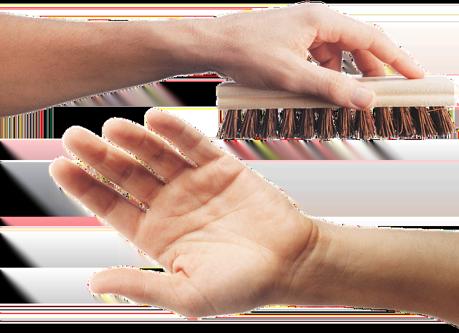Introduction
Maintaining a wrist brace in pristine condition is crucial for its effectiveness and longevity. Whether you’re using a wrist brace for medical reasons, sports, or daily support, regular cleaning ensures it remains hygienic and comfortable to wear. This guide will take you through the comprehensive steps on how to clean a wrist brace efficiently, keeping in mind different materials, preparation techniques, and cleaning methods.

Understanding Your Wrist Brace Material
Before diving into the cleaning process, it’s important to understand the material composition of your wrist brace. Wrist braces can be made from various materials like neoprene, nylon, spandex, and breathable mesh. Identifying the material helps in choosing the appropriate cleaning method.
For instance, neoprene is a synthetic rubber that requires gentle cleaning, while nylon and spandex can usually withstand more rigorous washing. Some wrist braces might also have metal or plastic inserts for added support, which will need special attention during cleaning to prevent damage.
Preparation Before Cleaning
Proper preparation ensures the cleaning process is effective and your wrist brace is well-protected. Here’s what to do:
- Check Instructions: Always read the manufacturer’s instructions on the label. These guidelines provide specific cleaning recommendations for your wrist brace material.
- Remove Inserts: If your wrist brace has metal or plastic inserts, remove them before washing. These can usually be cleaned separately with a damp cloth.
- Inspect for Damage: Check the brace for any wear and tear. Addressing these issues beforehand prevents further damage during cleaning.

Hand Washing Your Wrist Brace
Hand washing is a recommended cleaning method for most wrist braces, especially delicate ones. Here’s a step-by-step guide:
- Fill a Basin: Use lukewarm water in a small basin or sink. Avoid hot water as it can damage some materials.
- Add Mild Detergent: Mix in a small amount of mild detergent. Avoid harsh chemicals which can degrade the material.
- Submerge the Brace: Immerse the wrist brace in the soapy water, gently agitating it to release dirt.
- Scrub Gently: Use a soft brush or cloth to scrub any stubborn spots. Pay attention to areas with sweat and grime buildup.
- Rinse Thoroughly: Rinse the brace under lukewarm running water to remove all soap residues.
- Squeeze Excess Water: Gently squeeze the brace to remove excess water without wringing or twisting it.
Hand washing is thorough and gentle, ensuring the integrity of the brace remains intact.

Using Washing Machines for Wrist Braces
Transitioning from hand washing, some wrist braces are machine washable, offering a more convenient cleaning option. Follow these steps to safely use a washing machine:
- Use a Laundry Bag: Place the wrist brace in a mesh laundry bag to protect it from excess agitation.
- Select Gentle Cycle: Set the washing machine to a gentle cycle with cold water.
- Mild Detergent Only: Use a mild, non-bleach detergent suitable for delicates.
- Avoid Fabric Softeners: Do not use fabric softeners as they can coat the material and reduce its breathability.
Following this method ensures your wrist brace is cleaned effectively without risk of damage from the washing machine’s movements.
Drying Your Wrist Brace Properly
Following the washing, drying your wrist brace properly is crucial to maintain its quality. Follow these guidelines:
- Air Dry: Lay the wrist brace flat on a clean towel and reshape it if necessary. Avoid direct sunlight which can cause fading.
- Avoid Direct Heat: Do not use a dryer or place the brace near a heater as excessive heat can warp the material and affect its elasticity.
- Rotate for Even Drying: Occasionally rotate the brace to ensure all parts dry evenly.
Proper drying prevents mildew buildup and maintains the structural integrity of the brace.
Conclusion
Properly cleaning your wrist brace regularly is essential to its durability and your comfort. Whether you choose hand washing or machine washing, following these steps will ensure your brace remains in top condition. Proper cleaning prevents odors, maintains material integrity, and ensures that your wrist brace continues to provide the support you need.
Frequently Asked Questions
Can I soak my wrist brace overnight?
It’s best to avoid soaking your wrist brace overnight as prolonged exposure to water can weaken the material and any stitching. Instead, opt for a thorough but brief wash.
What should I do if my wrist brace starts smelling bad?
Persistent odors can be a sign of bacteria buildup. Hand wash the brace with a mixture of water and a small amount of white vinegar, which acts as a natural deodorizer. Make sure to rinse thoroughly.
Can I use bleach to clean my wrist brace?
Bleach and other harsh chemicals should be avoided because they can damage the material and irritate your skin. Stick to mild detergents for cleaning.
What should I do if my wrist brace starts smelling bad?
A bad odor can be eliminated by hand washing the wrist brace with a mixture of water and white vinegar. This solution acts as a natural deodorizer and removes lingering smells. Ensure you rinse thoroughly.
